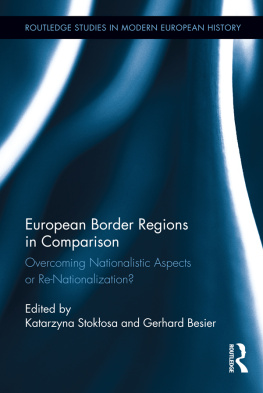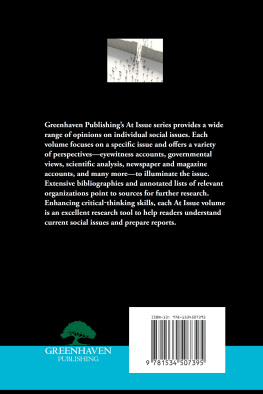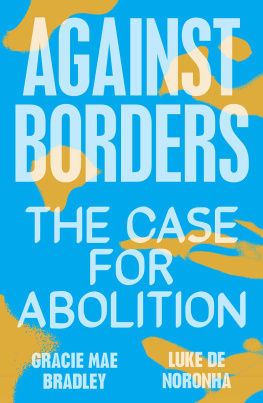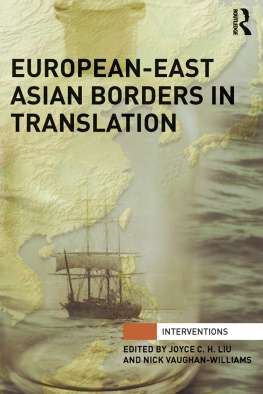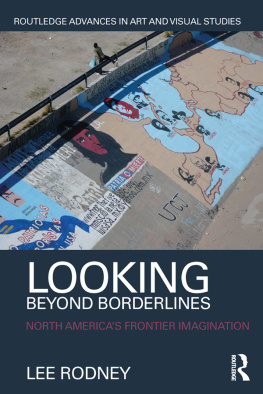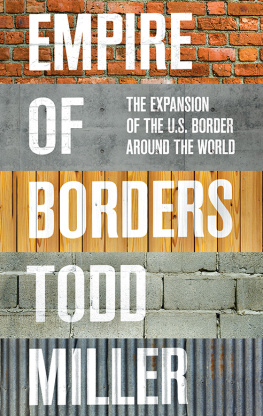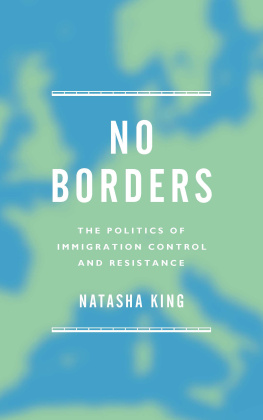Permeable Borders
Permeable Borders
History, Theory, Policy, and Practice in the United States
Edited by
Paul Otto and Susanne Berthier-Foglar
First published in 2020 by
Berghahn Books
www.berghahnbooks.com
2020 Paul Otto and Susanne Berthier-Foglar
All rights reserved. Except for the quotation of short passages for the purposes of criticism and review, no part of this book may be reproduced in any form or by any means, electronic or mechanical, including photocopying, recording, or any information storage and retrieval system now known or to be invented, without written permission of the publisher.
Library of Congress Cataloging-in-Publication Data
A C.I.P. cataloging record is available from the Library of Congress Library of Congress Cataloging in Publication Control Number: 2020006115
British Library Cataloguing in Publication Data
A catalogue record for this book is available from the British Library
ISBN 978-1-78920-442-1 hardback
ISBN 978-1-78920-443-8 ebook
Contents
Paul Otto and Susanne Berthier-Foglar
Roger L. Nichols
Jeffrey Swartwood
Claudie Servian
Heather Fryer
Marie-Christine Michaud
Jon Wiebel
Marietta Messmer
Cla Fortun
Marko Tocilovac
Victor Konrad
David C. Atkinson
Figures
Acknowledgments
This volume emerged from the research project Migrations and Borders in the United States: Discourses, Representations, Imaginary Contexts, which was initiated by the Institute of Languages and Cultures of Europe, America, Asia, and Australia at the Universit Grenoble Alpes, France. As a result of its support and encouragement, this study has born rich fruit, and we are greatly indebted to the Institute.
To our ten chapter contributors, we express supreme appreciation: first, for submitting your initial ideas that invited interdisciplinary discourse on the topic of migration and borders; second, for working with us to develop these ideas into substantive essays on the theme of permeable borders; and, finally, for faithfully responding to all our editorial requests and demands completely, graciously, and in a timely fashion. It was a great pleasure to work with each of you.
Very late in the process we invited David Atkinson to read and respond to all ten contributions, and we are very glad we did. His synthesisa thematic exploration of these diverse essayshas increased the value and significance of this volume severalfold.
At various stages of this project we received the able assistance of four undergraduate students: Erin Brudi, Maya Burgess, Jordan Lockwood, and Emma Reid. Details matter, and they demonstrated how well they understood that!
We especially appreciate the eleventh-hour assistance of Lynn Otto, who helped us finalize the manuscript and meet our publishers deadline. It is no exaggeration to say that without her keen mind, sharp editorial hand, and generous spirit, this books publication would have been delayed and its final shape found wanting.
Introduction
Paul Otto and Susanne Berthier-Foglar
Since we first envisioned this collection of essays, the United States elected a new president, Donald Trump, and the issues related to migration and borders took on far greater salience. Trumps America first campaign, which emphasized a secure American border, among other things, helped put him in the White House in 2017. By late 2018, the wall he proposed to build along the southern US border had become a centerpiece of President Trumps agenda. Just before the 2018 winter holidays, he staked all his political clout on a battle with Congress, forcing a shutdown of a significant portion of the government (ironically threatening weakened border control because of the withholding of government funds) while he demanded $5.6 billion to build a wall to create an absolute separation between the United States and Mexico. In one of his innumerable tweets, the president proclaimed, People want to stop drugs and criminals at the Border. Want Border Security!... The wait is costly and dangerous! (Trump 2019). Meanwhile, immigration issues have also drawn the focused attention of the president. Not content to address the issue of illegal or undocumented immigration, in August 2019 he announced changes to the application of the public charge law that would prevent the authorized immigration of any individual who might qualify for minimal social services, and those already legally residing in the United States and utilizing such services might be prevented from advancing toward full citizenship. Symbolic of this attitude, Ken Cuccinell, acting director of US Citizenship and Immigration Services, suggested on 13 August 2019 that the Statue of Libertys epitaph, long a symbol of hope and promise to would-be immigrants to the United States, would be better worded, Give me your tired and your poor who can stand on their own two feet and who will not become a public charge (quoted in Itkowitz and Sonmez 2019).
Unsurprisingly, many of our authors introduce their essays with reference to Trump or to his policies. But the currency of the border and immigration issues that helped fuel a presidential campaign and guide his administration should not obscure the fact that Americans have long been preoccupied with questions of national borders and migration across and within them. Nor have discussions of migration and borders been limited to national political boundaries. The American story has always included the experience of crossing or challenging cultural borders, questioning the existence of lines dividing ethnicities, genders, and religious groups, transgressing aesthetic and intellectual boundaries, and defying regulations or customs demarcating proper behavior.
This volume brings together essays that explore permeability or liminality of American borders.1 Many of these are case studies in how individuals or groups crossed geographic borders, but as will become abundantly clear, the concept of permeability is ripe with possibilities for exploring and better understanding the role of all sorts of borders in the United States today and in years, decades, and centuries past. Our authors explore the crossing of national borders, the creation of notional borders, the transgressing of aesthetic expectations and traditions, the challenging of racially based policies, the adoption of virtual borders to extend ethnic identity beyond former geographic boundaries, the blurring of policy divisions and the conflating of immigration and criminal law, the flow of economic, social, and cultural relationships despite heightened security concerns, the continuities and discontinuities across national borders, and the creation of imaginaries that uphold outmoded border structures or that embrace new global realities. We have grouped these essays under three categories: Historical Border Crossing: National, Ethnic, and Theoretical, Permeability in Border and Migration Policy, and National Borders, Liminal Spaces, and Permeation. While wide ranging in disciplinary approach, in scope and content, and in definition of borders, all of the chapters bring greater understanding to the permeability of borders in and surrounding the United States.
What do we mean by


